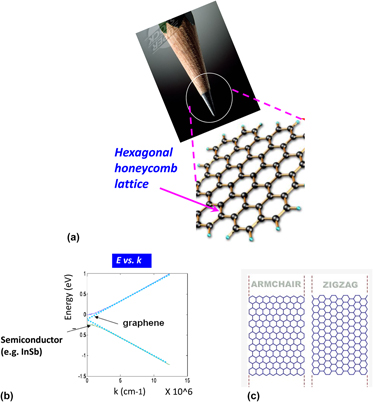Crossref Citations
This article has been cited by the following publications. This list is generated based on data provided by
Crossref.
Pang-Shiuan Liu
Chang-Hsiao Chen
Wei-Ting Hsu
Chih-Pin Lin
Tzu-Ping Lin
Li-Jen Chi
Chao-Yuan Chang
Shih-Chieh Wu
Wen-Hao Chang
Lain-Jong Li
and
Tuo-Hung Hou
2014.
Fast visible-light phototransistor using CVD-synthesized large-area bilayer WSe<inf>2</inf>.
p.
5.7.1.
Alemayehu, Matti B.
Falmbigl, Matthias
Ta, Kim
Ditto, Jeffrey
Medlin, Douglas L.
and
Johnson, David C.
2015.
Designed Synthesis of van der Waals Heterostructures: The Power of Kinetic Control.
Angewandte Chemie,
Vol. 127,
Issue. 51,
p.
15688.
Liu, H. F.
Wong, S. L.
and
Chi, D. Z.
2015.
CVD Growth of MoS2‐based Two‐dimensional Materials.
Chemical Vapor Deposition,
Vol. 21,
Issue. 10-11-12,
p.
241.
Alemayehu, Matti B.
Falmbigl, Matthias
Ta, Kim
Ditto, Jeffrey
Medlin, Douglas L.
and
Johnson, David C.
2015.
Designed Synthesis of van der Waals Heterostructures: The Power of Kinetic Control.
Angewandte Chemie International Edition,
Vol. 54,
Issue. 51,
p.
15468.
Franklin, Aaron D.
2015.
Nanomaterials in transistors: From high-performance to thin-film applications.
Science,
Vol. 349,
Issue. 6249,
Chen, Yu
Tan, Chaoliang
Zhang, Hua
and
Wang, Lianzhou
2015.
Two-dimensional graphene analogues for biomedical applications.
Chemical Society Reviews,
Vol. 44,
Issue. 9,
p.
2681.
Huang, Yinxi
Guo, Jinhong
Kang, Yuejun
Ai, Ye
and
Li, Chang Ming
2015.
Two dimensional atomically thin MoS2nanosheets and their sensing applications.
Nanoscale,
Vol. 7,
Issue. 46,
p.
19358.
Fadil, Dalal
Lara, Gustavo E.
Michel, Monica
Delgado, Alberto
Gaytan, Christopher
and
Kaul, Anupama B.
2015.
Properties of 2D layered crystals: MoS<sup>2</sup>, NbSe<inf>2</inf> and black phosphorus.
p.
3.
Carey, Benjamin J.
Daeneke, Torben
Nguyen, Emily P.
Wang, Yichao
Zhen Ou, Jian
Zhuiykov, Serge
and
Kalantar-zadeh, Kourosh
2015.
Two solvent grinding sonication method for the synthesis of two-dimensional tungsten disulphide flakes.
Chemical Communications,
Vol. 51,
Issue. 18,
p.
3770.
Faraji, M.
Sabzali, M.
Yousefzadeh, S.
Sarikhani, N.
Ziashahabi, A.
Zirak, M.
and
Moshfegh, A. Z.
2015.
Band engineering and charge separation in the Mo1−xWxS2/TiO2heterostructure by alloying: first principle prediction.
RSC Advances,
Vol. 5,
Issue. 36,
p.
28460.
Dragoman, Mircea
Cismaru, Alina
Aldrigo, Martino
Radoi, Antonio
Dinescu, Adrian
and
Dragoman, Daniela
2015.
MoS2 thin films as electrically tunable materials for microwave applications.
Applied Physics Letters,
Vol. 107,
Issue. 24,
Niu, Tianchao
and
Li, Ang
2015.
From two-dimensional materials to heterostructures.
Progress in Surface Science,
Vol. 90,
Issue. 1,
p.
21.
Güller, F.
Llois, A. M.
Goniakowski, J.
and
Noguera, C.
2015.
Prediction of structural and metal-to-semiconductor phase transitions in nanoscaleMoS2,WS2, and other transition metal dichalcogenide zigzag ribbons.
Physical Review B,
Vol. 91,
Issue. 7,
Donarelli, M.
Prezioso, S.
Perrozzi, F.
Bisti, F.
Nardone, M.
Giancaterini, L.
Cantalini, C.
and
Ottaviano, L.
2015.
Response to NO2 and other gases of resistive chemically exfoliated MoS2-based gas sensors.
Sensors and Actuators B: Chemical,
Vol. 207,
Issue. ,
p.
602.
Duan, Xidong
Wang, Chen
Pan, Anlian
Yu, Ruqin
and
Duan, Xiangfeng
2015.
Two-dimensional transition metal dichalcogenides as atomically thin semiconductors: opportunities and challenges.
Chemical Society Reviews,
Vol. 44,
Issue. 24,
p.
8859.
Fadil, Dalal
Fayaz, Ridwan H.
and
Kaul, Anupama B.
2016.
Electronic and Optical Properties Characterization of MoS2 Two-Dimensional Exfoliated nanomaterials.
MRS Advances,
Vol. 1,
Issue. 47,
p.
3223.
Ji, Jianting
Dong, Shan
Zhang, Anmin
and
Zhang, Qingming
2016.
Low-frequency interlayer vibration modes in two-dimensional layered materials.
Physica E: Low-dimensional Systems and Nanostructures,
Vol. 80,
Issue. ,
p.
130.
Zhu, H L
Zhou, C J
Huang, X J
Wang, X L
Xu, H Z
Lin, Yong
Yang, W H
Wu, Y P
Lin, W
and
Guo, F
2016.
Evolution of band structures in MoS2-based homo- and heterobilayers.
Journal of Physics D: Applied Physics,
Vol. 49,
Issue. 6,
p.
065304.
Kaul, Anupama B.
2016.
Solution-based Production of 2D-layered Materials.
MRS Advances,
Vol. 1,
Issue. 32,
p.
2267.
McGuire, Felicia A.
Cheng, Zhihui
Price, Katherine
and
Franklin, Aaron D.
2016.
Sub-60 mV/decade switching in 2D negative capacitance field-effect transistors with integrated ferroelectric polymer.
Applied Physics Letters,
Vol. 109,
Issue. 9,
